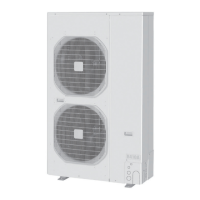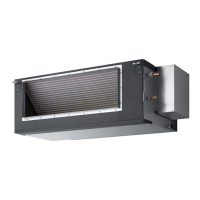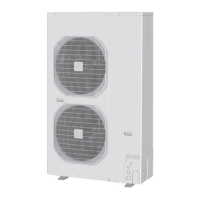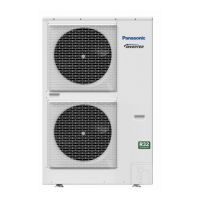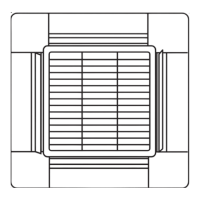9
2-8. Checks to electrical devices
•
Repair and maintenance to electrical
components shall include initial safety checks
and component inspection procedures.
•
Initial safety checks shall include but not limit
to:-
-
That capacitors are discharged: this
shall be done in a safe manner to avoid
possibility of sparking.
-
That there no live electrical components
and wiring are exposed while charging,
recovering or purging the system.
-
That there is continuity of earth bonding.
•
At all times the manufacturer’s maintenance
and service guidelines shall be followed.
•
If in doubt consult the manufacturer’s
technical department for assistance.
•
If a fault exists that could compromise safety,
then no electrical supply shall be connected
to the circuit until it is satisfactorily dealt with.
•
If the fault cannot be corrected immediately
but it is necessary to continue operation, an
adequate temporary solution shall be used.
•
The owner of the equipment must be
informed or reported so all parties are
advised thereinafter.
3. Sealed electrical components
•
Sealed electrical components shall not be
repaired.
4. Cabling
•
Check that cabling will not be subject
to wear, corrosion, excessive pressure,
vibration, sharp edges or any other adverse
environmental eff ects.
•
The check shall also take into account the
eff ects of aging or continual vibration from
sources such as compressors or fans.
5. Detection of fl ammable refrigerants
•
Under no circumstances shall potential
sources of ignition be used in the searching
or detection of refrigerant leaks.
•
A halide torch (or any other detector using a
naked fl ame) shall not be used.
6. The following leak detection methods
are deemed acceptable for all refrigerant
systems
•
No leaks shall be detected using detection
equipment with sensitivity to detect leakage
of 5g/year of refrigerant or better under a
pressure of at least 0.25 times the maximum
allowable pressure (>1.04 MPa, max 4.15
MPa), for example, a universal sniff er.
•
Electronic leak detectors may be used
to detect fl ammable refrigerants, but the
sensitivity can be inadequate, or can need
re-calibration.
(Detection equipment shall be calibrated in a
refrigerant-free area.)
•
Ensure that the detector is not a potential
source of ignition and is suitable for the
refrigerant used.
•
Leak detection equipment shall be set at a
percentage of the LFL of the refrigerant and
shall be calibrated to the refrigerant employed
and the appropriate percentage of gas (25 %
maximum) is confi rmed.
•
Leak detection fluids are also suitable for use
with most refrigerants, for example, bubble
method and fluorescent agent method. The
use of detergents containing chlorine shall
be avoided as the chlorine may react with the
refrigerant and corrode the copper pipe-work.
•
If a leak is suspected, all naked fl ames shall
be removed/extinguished.
•
If a leakage of refrigerant is found which
requires brazing, all of the refrigerant shall
be recovered from the system, or isolated
(by means of shut off valves) in a part of the
system remote from the leak. The precautions
in #8 must be followed to remove the
refrigerant.

